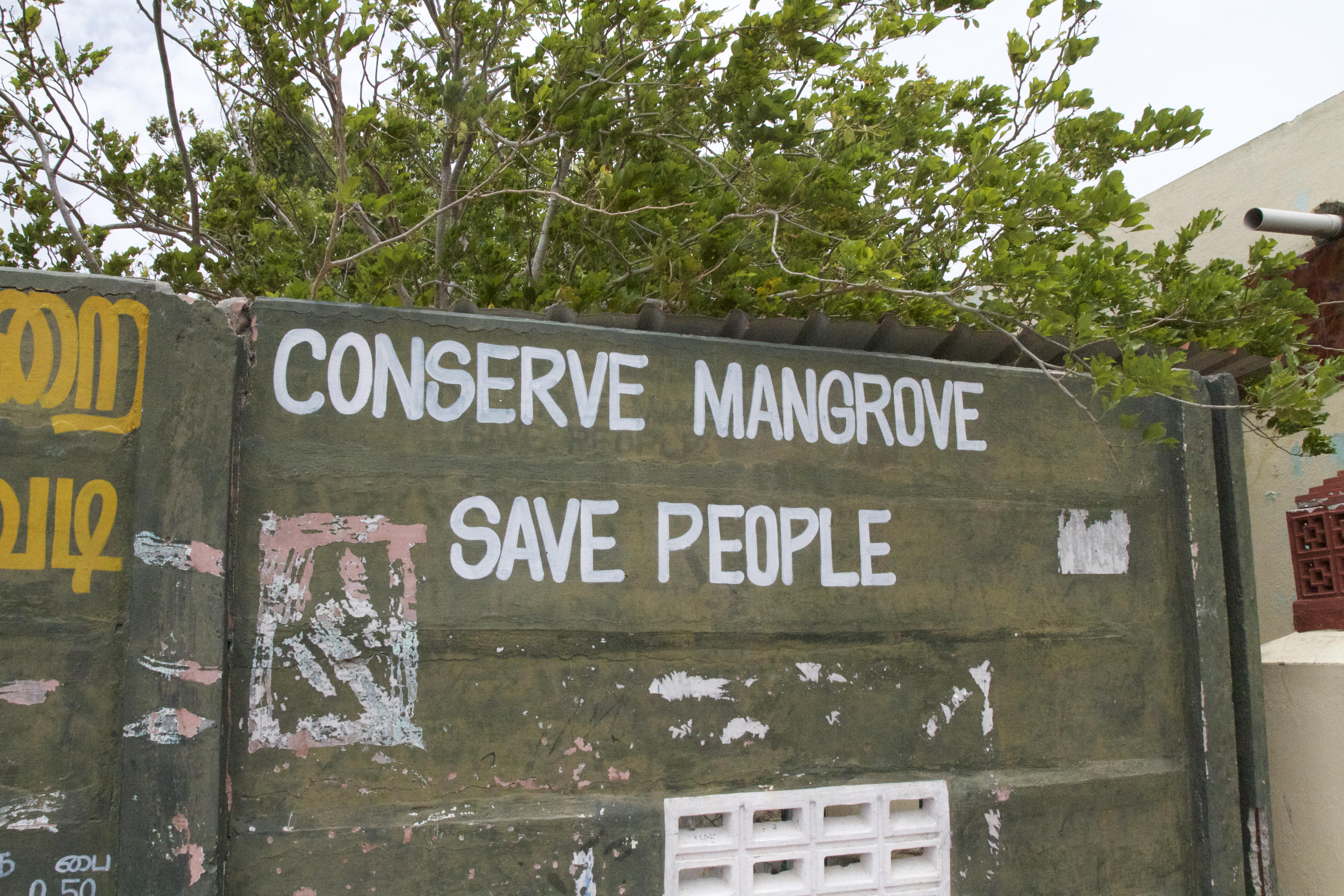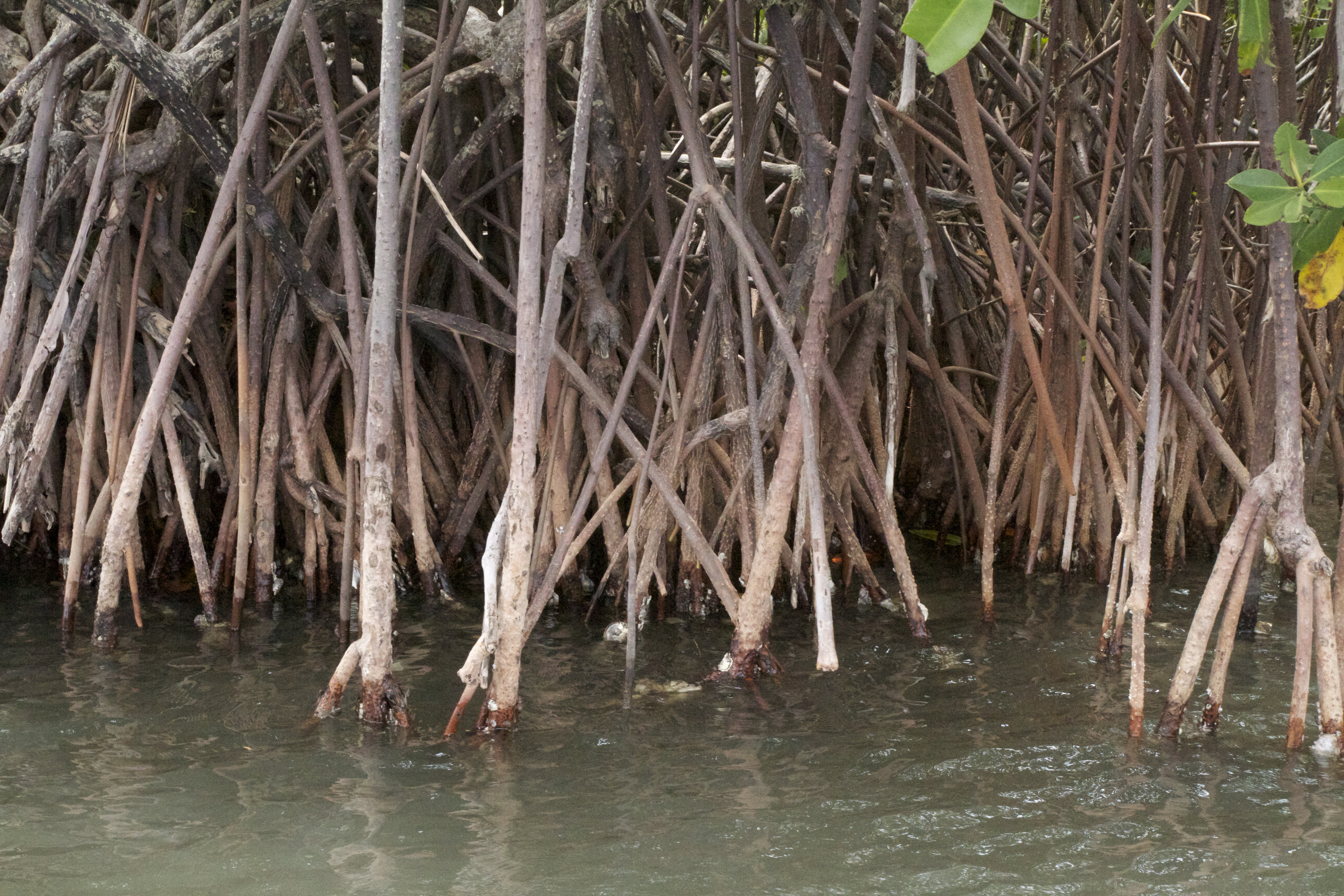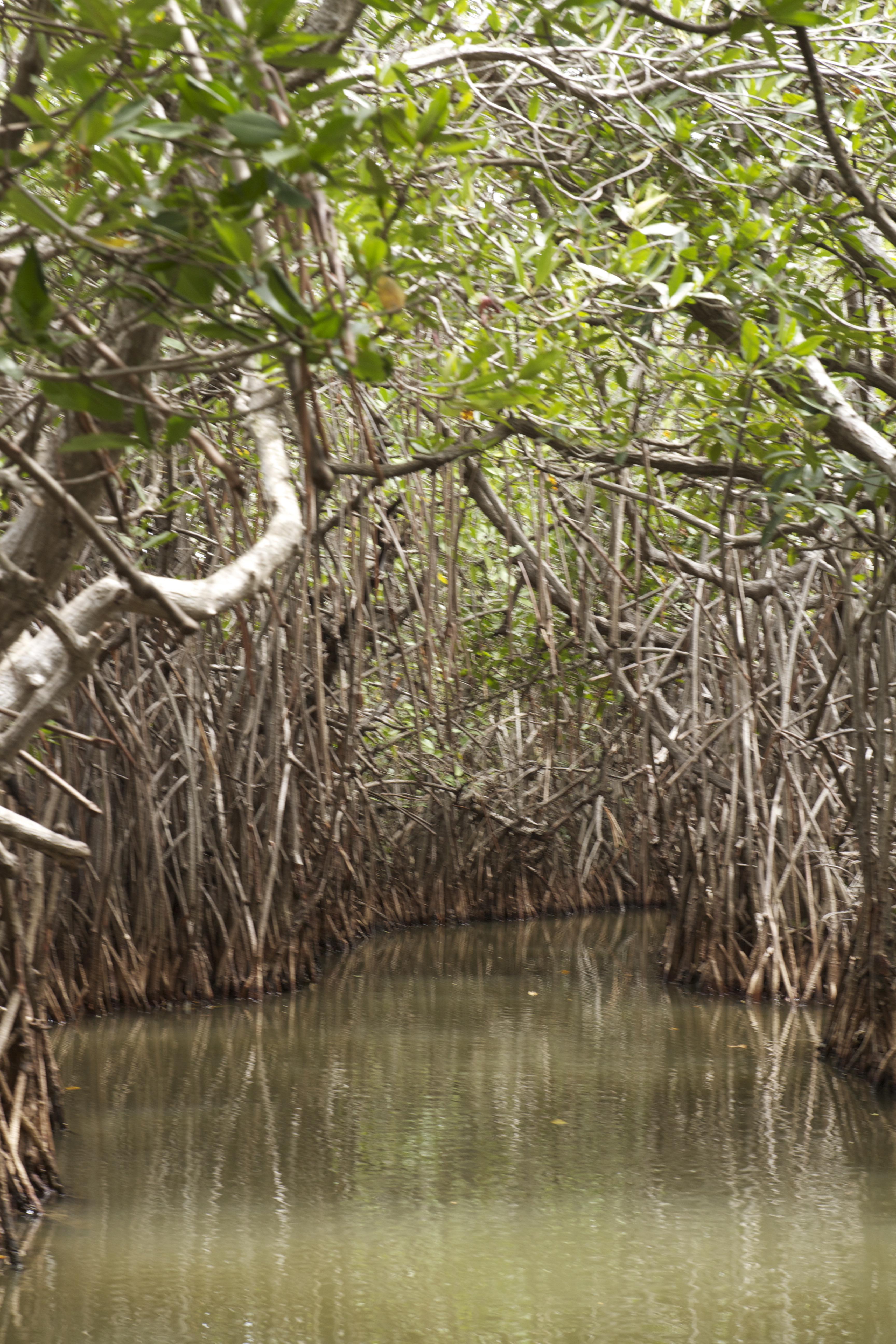By Sunil Amrith
Rachel Carson’s 1955 book, The Edge of the Sea, is one of the most poetic works of science writing that I know. Some of her most evocative descriptions were reserved for the mangrove forests of the U.S. Atlantic coast. “Mangroves are among the far migrants of the plant kingdom, forever sending their young stages off to establish pioneer colonies” she wrote. Mangroves excelled in “creating land where once there was sea.”
But almost everywhere in the world, mangroves are in retreat. Deforestation and aquaculture encroach on the mangroves that provide coastal zones with their the best natural flood defenses. Aquaculture expands as deep-sea fishing provides diminishing returns. As they give way to industrial (and often state-subsidized) prawn farms, the land recedes with the loss of what Carson called the “complex matrix of roots and stems” that “traps and binds sediment and stabilizes the coast.”
Many recent reports suggest that the loss of mangrove forest in Asia and elsewhere is one of many contributing factors to the increase in coastal communities’ vulnerability to flooding.
I thought of Rachel Carson and her beloved mangroves as I travelled through Pichavaram forest, where the Kaveri river meets the Bay of Bengal. Pichavaram, close to the temple town of Chidambaram, is among the largest mangrove forests in the world. It is also in unusually good health.
The landscape rose to prominence when it was used as the setting for an MGR film, Thittu, though it is relatively little visited. The area is under the control of the Tamil Nadu Forest Department.
 In the silence, it felt very much like the edge of the sea: the edge of the Bay of Bengal.
In the silence, it felt very much like the edge of the sea: the edge of the Bay of Bengal.
Our guide to Pichavaram was a local fisherman, born and raised in the area. “There are over five thousand canals,” he said, referring to the winding waterways, under a canopy of trees, that he navigated with ease, “I know them all.” I ask if the area has changed much, in his lifetime, he says it has not. His hamlet, he tells me, was protected from the worst of the tsunami in 2004, sheltered by the mangroves.
Mangroves are, in ecological terms, the ultimate “coastal frontier,” where salt water meets fresh. As the Coastal Frontiers project develops, we hope to be able to look comparatively at some of the key mangrove forests of the Bay of Bengal’s rim—not just as ecological frontiers, but as cultural borderlands.



